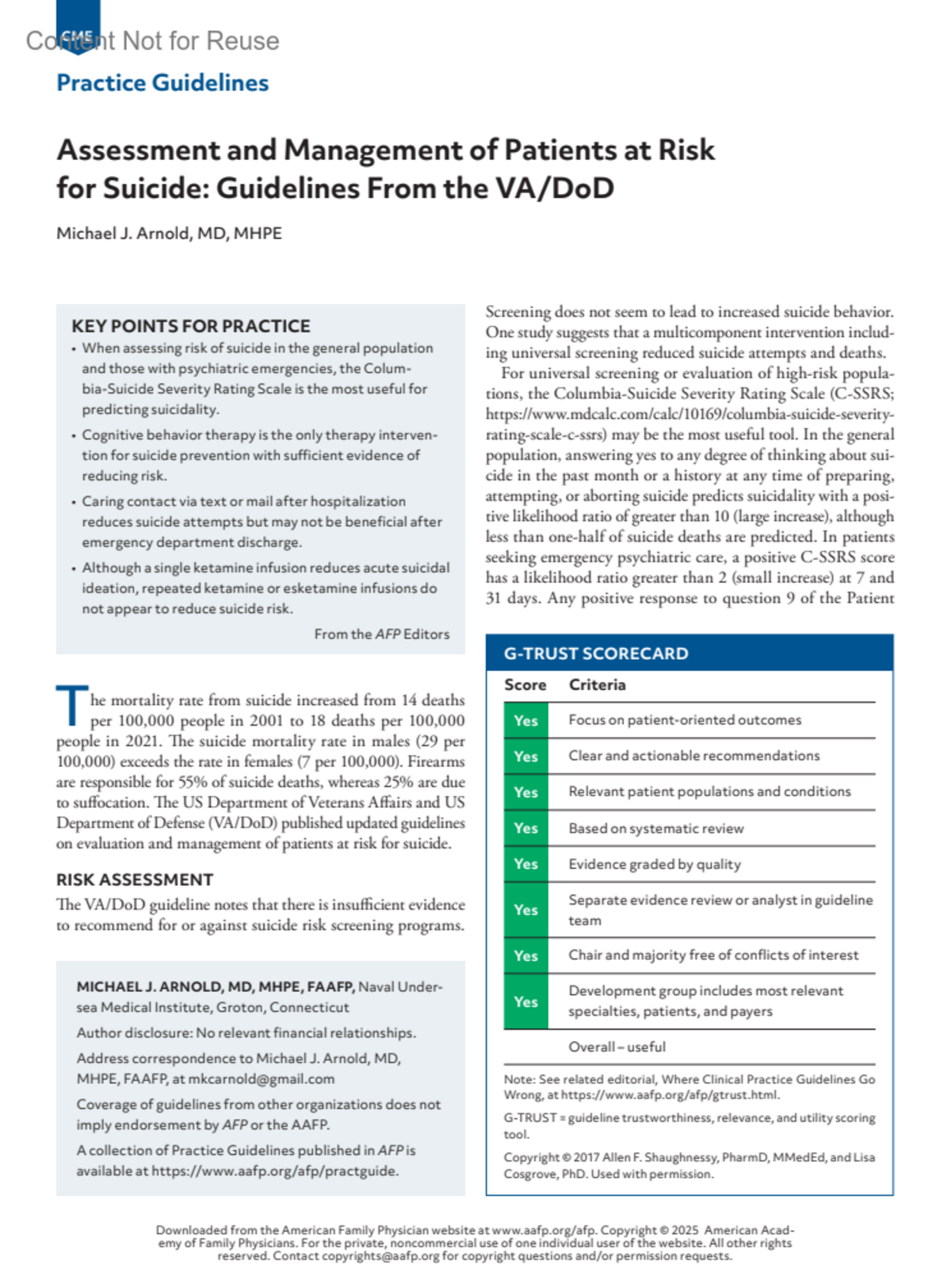Assessment and Management of Patients at Risk for Suicide: Guidelines From the VA/DoD
- Arnold, Michael J. MD, MHPE
MICHAEL J. ARNOLD, MD, MHPE, FAAFP, Naval Undersea Medical Institute, Groton, Connecticut
Author disclosure: No relevant financial relationships.
Address correspondence to Michael J. Arnold, MD, MHPE, FAAFP, at [email protected]
Coverage of guidelines from other organizations does not imply endorsement by AFP or the AAFP.
A collection of Practice Guidelines published in AFP is available at https://www.aafp.org/afp/practguide.
Editor's Note: The VA/DoD organizations have, unfortunately, some expertise in suicide because rates are high in active-duty military members and veterans. These guidelines are based primarily on research performed in nonmilitary populations. Although suicide risk is difficult to identify, the C-SSRS appears to be the best tool to use. The C-SSRS can be used in high- or low-risk populations, but question 9 of the PHQ-9 is only appropriate for screening in low-risk populations. CBT is the most studied form of psychological therapy overall; in suicide, it seems to be the only one with evidence. It is nice to know that a single ketamine infusion can acutely reduce suicidal ideation, whereas continued infusions do not appear effective.
—Michael J. Arnold, MD, MHPE, Assistant Medical Editor
The views expressed are those of the author and do not necessarily reflect the official policy or position of the Naval Under-sea Medical Institute, Uniformed Services University of the Health Sciences, US Navy, US Department of Defense, or US government.
Guideline source: US Department of Veterans Affairs and US Department of Defense
Available at https://www.healthquality.va.gov/guidelines/mh/srb/

